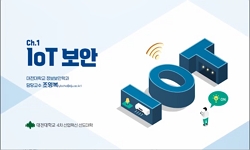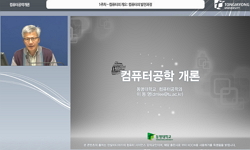In compact Internet of things (IoT) systems, many kinds of low-power and low-supply building blocks are required to increase the lifetime of a battery. Especially, in ultra-low-power (ULP) IoT systems, it is mandatory for power management to turn off ...
http://chineseinput.net/에서 pinyin(병음)방식으로 중국어를 변환할 수 있습니다.
변환된 중국어를 복사하여 사용하시면 됩니다.
- 中文 을 입력하시려면 zhongwen을 입력하시고 space를누르시면됩니다.
- 北京 을 입력하시려면 beijing을 입력하시고 space를 누르시면 됩니다.
https://www.riss.kr/link?id=T16372335
- 저자
-
발행사항
[Seoul] : Graduate School, Yonsei University, 2022
-
학위논문사항
학위논문(석사) -- Graduate School, Yonsei University , School of Electrical and Electronic Engineering , 2022.8
-
발행연도
2022
-
작성언어
영어
- 주제어
-
발행국(도시)
서울
-
형태사항
viii, 59장 : 삽화 ; 26 cm
-
일반주기명
지도교수: Youngcheol Chae
-
UCI식별코드
I804:11046-000000542752
- 소장기관
-
0
상세조회 -
0
다운로드
부가정보
다국어 초록 (Multilingual Abstract)

In compact Internet of things (IoT) systems, many kinds of low-power and low-supply building blocks are required to increase the lifetime of a battery. Especially, in ultra-low-power (ULP) IoT systems, it is mandatory for power management to turn off in the state not in use and reduce settling time at the beginning of the operation. In this paper, dynamic (on/off) CMOS voltage reference from 0.7V is introduced. 2-transistors in series discharge a capacitor, and then by subtracting each threshold voltage, generate supply-independent and temperature-independent voltage in a period. An auto-zeroed long-hold buffer is located at the back-end of voltage reference, so that it is possible to lengthen a period and further reduce power of voltage reference. Prototype chips fabricated in 65nm-CMOS process show temperature coefficient of 8ppm/℃ (best) and line sensitivity of 0.08%/V and consume 13nW in a period of 102.4μs from -40oC to 100oC. A time-based trimming method is adopted to adjust capacitor discharging time and generate a precise reference voltage without affecting reference core block. This simple method is able to reduce 3σ inaccuracy of reference voltage from ±1.1% to ±0.3% across all 100 dies.
이 회로는 시간으로 전압을 만드는 레퍼런스이기 때문에 trimming 또한 다른 레퍼런스에 비해서 간단하게 할 수 있는 장점이 있다. 보통 전압 레퍼런스는 핵심 회로 부분에 추가적인 회로를 붙이는 방식으로 소자들의 크기를 조절할 수 있게 만들어 trimming을 진행한다. 하지만 이 방식은 시간 소모적인 방식이고 추가적인 회로가 핵심 회로 부분 옆에 붙기 때문에 회로의 특성을 망칠 수 있다. 본 연구는 시간으로 trimming 하는 방식을 채택하였다. 그렇게 되면 추가적인 회로가 필요하지 않고 CMOS를 통해서 커패시터가 방전하는 시간을 바꾸는 방식을 통해서 전압 레퍼런스의 정확도를 높일 수 있다. 또한, 전압 레퍼런스 뒤에 오토 제로 샘플 앤 홀드 버퍼를 연결하여 전압 레퍼런스에서 만든 전압을 오래 유지할 수 있는 회로를 통해서 전압 레퍼런스의 전력을 더 감소시켜줄 수 있게 설계를 하였다.
구현된 전압 레퍼런스는 2.5MHz의 마스터 클럭을 인가하여 전압 레퍼런스와 오토 제로 샘플 앤 홀드 버퍼에서 사용하는 펄스를 만들어주는 디지털 로직과 전압 레퍼런스, 그리고 오토 제로 샘플 앤 홀드로 구성이 되어 있다. 또한, 전압 레퍼런스의 전력 소모는 ~20nW 수준이며 오토 제로 샘플 앤 홀드 버퍼를 통해서 전압 레퍼런스를 꺼서 더 낮은 수준의 전력 소모도 기대할 수 있다. 무엇보다 다양한 IoT 어플리케이션 목표의 전압 레퍼런스에 비해서 temperature coefficient와 line sensitivity가 8ppm/℃와 0.083% (best)로 가장 좋은 수준이고, 이는 파워를 훨씬 많이 소모하는 전압 레퍼런스와 비교할 만한 수준이다. 본 연구는 전압 레퍼런스를 본래 사용하던 정적 구조가 아닌 다이나믹 구조를 사용하여 높은 성능의 저전력 레퍼런스를 만들 가능성을 보였다.
본 연구의 회로는 두 트랜지스터의 문턱전압을 빼는 방식으로 전압을 만드는데, 이때 커패시터에 저장된 전압을 두 CMOS를 통해서 방전을 시키는 다이나믹 구조를 사용한다. 커패시터를 CMOS...
본 연구의 회로는 두 트랜지스터의 문턱전압을 빼는 방식으로 전압을 만드는데, 이때 커패시터에 저장된 전압을 두 CMOS를 통해서 방전을 시키는 다이나믹 구조를 사용한다. 커패시터를 CMOS를 통해서 방전시키면 시간에 따라서 CMOS의 게이트-소스 전압이 온도에 따라 CTAT의 특성이 있게 되고, 두 CMOS의 게이트-소스 전압을 빼는 방식으로 회로가 동작하게 된다. 이런 다이나믹한 방식을 사용하면 레퍼런스가 만들어지는 일정 시간을 얻어낼 수 있고 그 시간이 사용하는 전력에 비해서 짧은 시간이기 때문에 긴 settling time의 문제도 해결할 수 있다.
이 회로는 시간으로 전압을 만드는 레퍼런스이기 때문에 trimming 또한 다른 레퍼런스에 비해서 간단하게 할 수 있는 장점이 있다. 보통 전압 레퍼런스는 핵심 회로 부분에 추가적인 회로를 붙이는 방식으로 소자들의 크기를 조절할 수 있게 만들어 trimming을 진행한다. 하지만 이 방식은 시간 소모적인 방식이고 추가적인 회로가 핵심 회로 부분 옆에 붙기 때문에 회로의 특성을 망칠 수 있다. 본 연구는 시간으로 trimming 하는 방식을 채택하였다. 그렇게 되면 추가적인 회로가 필요하지 않고 CMOS를 통해서 커패시터가 방전하는 시간을 바꾸는 방식을 통해서 전압 레퍼런스의 정확도를 높일 수 있다. 또한, 전압 레퍼런스 뒤에 오토 제로 샘플 앤 홀드 버퍼를 연결하여 전압 레퍼런스에서 만든 전압을 오래 유지할 수 있는 회로를 통해서 전압 레퍼런스의 전력을 더 감소시켜줄 수 있게 설계를 하였다.
구현된 전압 레퍼런스는 2.5MHz의 마스터 클럭을 인가하여 전압 레퍼런스와 오토 제로 샘플 앤 홀드 버퍼에서 사용하는 펄스를 만들어주는 디지털 로직과 전압 레퍼런스, 그리고 오토 제로 샘플 앤 홀드로 구성이 되어 있다. 또한, 전압 레퍼런스의 전력 소모는 ~20nW 수준이며 오토 제로 샘플 앤 홀드 버퍼를 통해서 전압 레퍼런스를 꺼서 더 낮은 수준의 전력 소모도 기대할 수 있다. 무엇보다 다양한 IoT 어플리케이션 목표의 전압 레퍼런스에 비해서 temperature coefficient와 line sensitivity가 8ppm/℃와 0.083% (best)로 가장 좋은 수준이고, 이는 파워를 훨씬 많이 소모하는 전압 레퍼런스와 비교할 만한 수준이다. 본 연구는 전압 레퍼런스를 본래 사용하던 정적 구조가 아닌 다이나믹 구조를 사용하여 높은 성능의 저전력 레퍼런스를 만들 가능성을 보였다.
목차 (Table of Contents)
- Table of Contents ………………………………………………………………. i
- List of Figures ………………………………………………………………… iv
- List of Tables …………………………………………………………………. vi
- Abstract ……………………………………………………………………… vii
- 1. Introduction ………………………………………………………………… 1
- Table of Contents ………………………………………………………………. i
- List of Figures ………………………………………………………………… iv
- List of Tables …………………………………………………………………. vi
- Abstract ……………………………………………………………………… vii
- 1. Introduction ………………………………………………………………… 1
- 1.1. Motivation ………….…………………………………………… 1
- 1.2. Voltage Reference: Brief Review ……………………………… 3
- 1.3. Low-power Voltage References ……………………………… 5
- 1.4. Design Target Specification ……...…………………………… 6
- References ……………………………………………………………………… 11
- 2. Proposed Dynamic Voltage Reference …………………………………… 15
- 2.1. Capacitor-discharge by Active Elements: CTAT ……………… 15
- 2.1.1 Diode-based Discharge ……………………………… 16
- 2.1.2 MOSFET-based Discharge ………………….……… 18
- 2.2. Proposed Voltage Reference ………………………………… 20
- 2.2.1 Optimal Time ………………………………………… 22
- 2.2.2 Power Supply Rejection Ratio …………….……… 24
- 2.3. Additional Considerations …………………………………… 28
- 2.3.1 Types of Device ………………………………………… 28
- 2.3.2 V_th Variation by Transistor Length ……….……… 30
- 2.4. Auto-zeroing Sample-and-Hold Buffer ……………………… 31
- 2.4.1 Sample-and-Hold Technique ……………………… 31
- 2.4.2 Proposed S/H Buffer ……….……………………… 33
- 3. Circuit implementation ………………………………………………… 35
- 3.1. Overall Architecture ………………………………………… 35
- 3.2. Dynamic Voltage Reference Core ………………………… 36
- 3.2.1 Implementation ……………………………………… 37
- 3.2.2 Simulation Results ………………………………… 39
- 3.3. Auto-zero S/H Buffer …………………………………………40
- 3.3.1 Class-AB Amplifier ………………………………… 41
- 3.3.2 Simulation Results ………………………………… 43
- 4. Trimming Method ……………………………………………………… 45
- 4.1. Trimming Considerations …………………………………… 45
- 4.2. Trimming Technique …………….………………………… 46
- 4.2.1 Black-end & Analog Trimming …………………… 46
- 4.2.2 Time-based Trimming ……………………………… 48
- 4.3. Pulse Generator ……………………………………………… 51
- 5. Conclusion ………………………...……….……………………….… 52
- References …………………………………………………………………… 54
- 국문요약 …………………………………………………………………… 57












